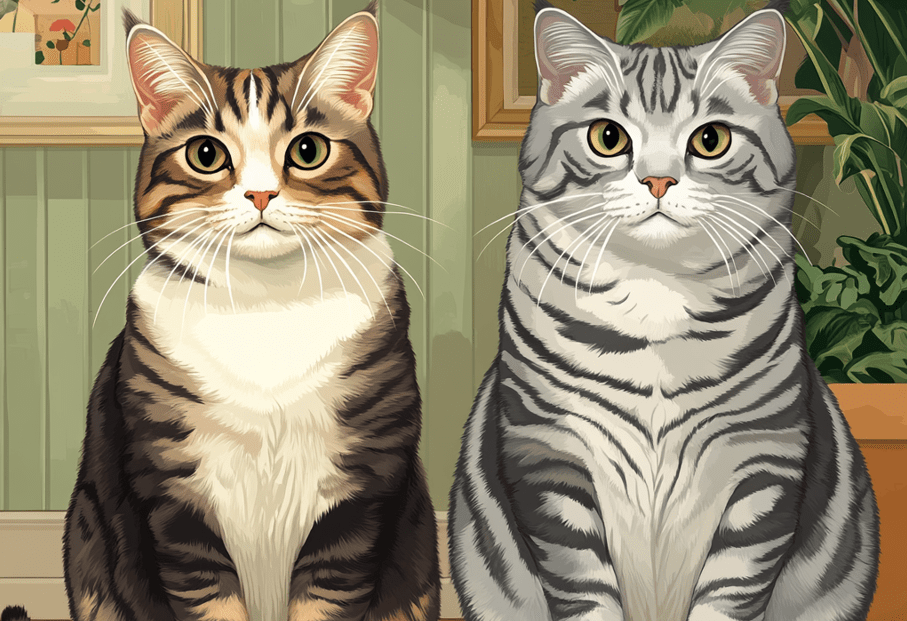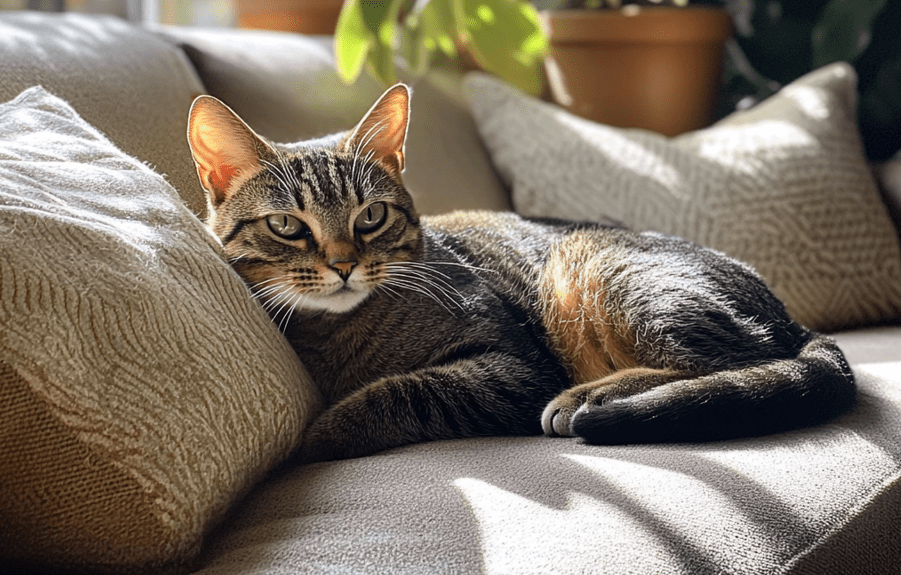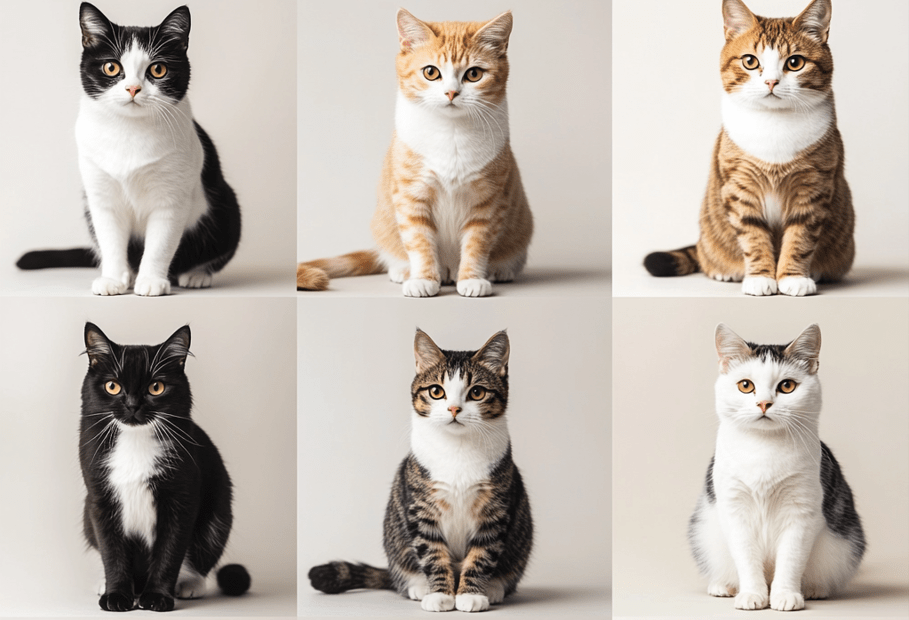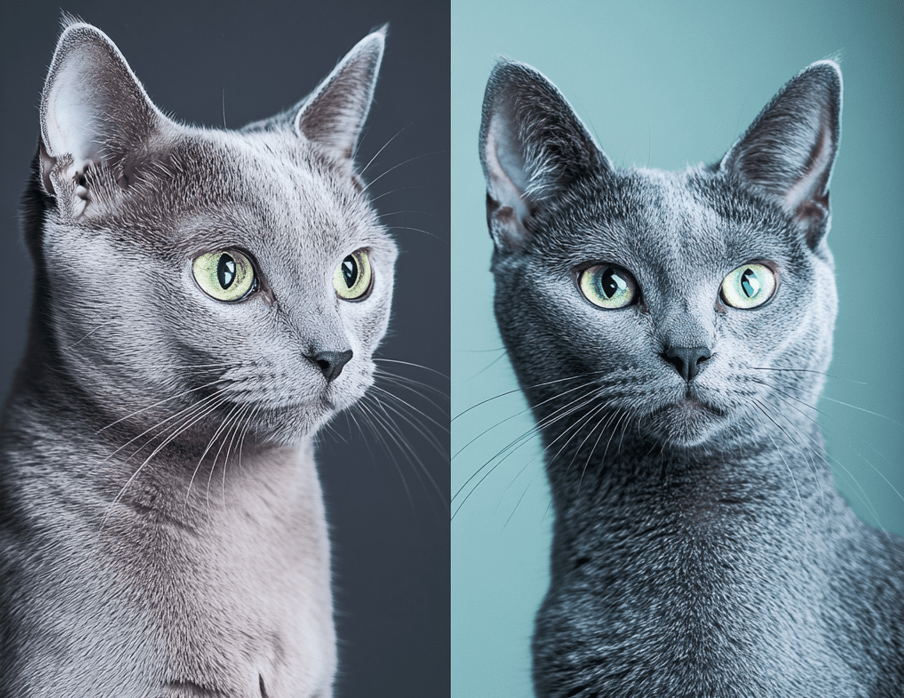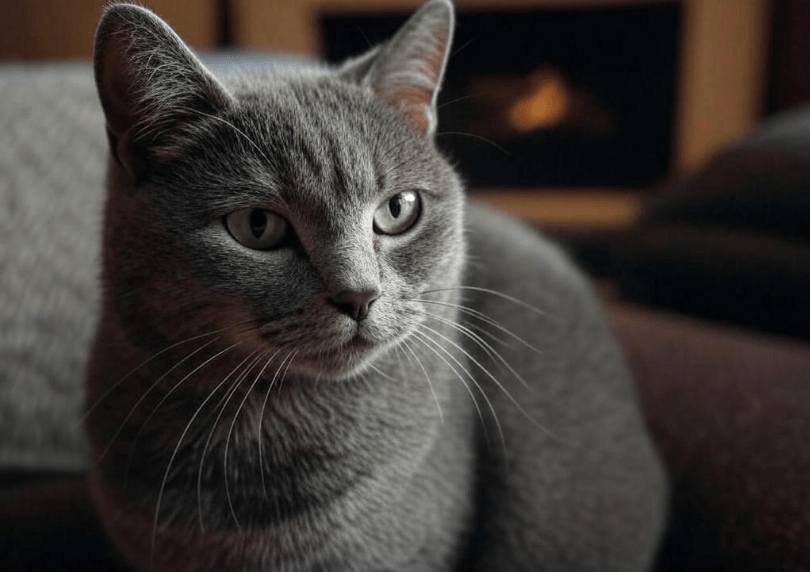
Hyperthyroidism is a common condition in aging cats, particularly in older Domestic Shorthairs. Recognizing hyperthyroidism symptoms in older Domestic Shorthairs early can make a significant difference in your cat’s health and quality of life. This endocrine disorder, often caused by an overactive thyroid gland, can lead to a range of health issues if left untreated. In this comprehensive guide, we’ll explore the signs of hyperthyroidism, its causes, diagnosis, treatment options, and how you can support your feline companion through this condition.
What is Hyperthyroidism in Cats?
Hyperthyroidism occurs when the thyroid gland, located in the neck, produces excessive amounts of thyroid hormones (T3 and T4). These hormones regulate metabolism, and an overproduction can accelerate your cat’s bodily functions, leading to a variety of symptoms. Domestic Shorthairs, a popular breed known for their short coats and diverse coat patterns, are particularly prone to this condition as they age, typically after 10 years.
Why Are Older Domestic Shorthairs at Risk?
Older Domestic Shorthairs are more susceptible to hyperthyroidism due to age-related changes in their endocrine system. The condition is often linked to benign tumors (adenomas) on the thyroid gland, though the exact cause of these growths remains unclear. Factors like genetics, diet, and environmental influences may also contribute to the development of hyperthyroidism in aging cats.
Common Hyperthyroidism Symptoms in Older Domestic Shorthairs

Spotting the signs of hyperthyroidism early is crucial for effective management. Below are the most common symptoms to watch for in your older Domestic Shorthair:
1. Weight Loss Despite Increased Appetite
One of the hallmark signs of hyperthyroidism is unexplained weight loss, even when your cat seems hungrier than usual. The increased metabolism caused by excess thyroid hormones burns calories at a faster rate, leading to a leaner appearance despite a voracious appetite.
2. Increased Thirst and Urination
Hyperthyroidism can affect kidney function, leading to increased thirst (polydipsia) and urination (polyuria). You might notice your cat drinking more water or needing to use the litter box more frequently.
3. Hyperactivity or Restlessness
Does your older Domestic Shorthair seem unusually active or restless? Hyperthyroidism can cause a surge in energy, making your cat appear agitated, pacing more, or having difficulty settling down.
4. Vomiting and Diarrhea
Digestive issues like vomiting and diarrhea are common in cats with hyperthyroidism. The accelerated metabolism can overwhelm the gastrointestinal system, leading to these symptoms.
5. Poor Coat Condition
A dull, unkempt, or matted coat is another sign to watch for. Hyperthyroidism can affect grooming habits, as your cat may feel too unwell or restless to maintain its usual grooming routine.
6. Rapid Heart Rate and Heart Murmurs
Excess thyroid hormones can strain the heart, leading to a rapid heart rate (tachycardia) or even heart murmurs. This can also contribute to high blood pressure, which may cause additional complications.
7. Behavioral Changes
Some cats with hyperthyroidism exhibit behavioral changes, such as increased vocalization, irritability, or anxiety. These changes can be subtle but may become more noticeable over time.
8. Muscle Weakness and Lethargy
While hyperactivity is common, some cats may experience muscle weakness or lethargy as the condition progresses. This can manifest as difficulty jumping onto furniture or a general lack of energy.
Causes of Hyperthyroidism in Older Domestic Shorthairs
The primary cause of hyperthyroidism in cats is a benign tumor on the thyroid gland, known as a thyroid adenoma. In rare cases, the condition may be caused by a malignant tumor (thyroid adenocarcinoma). Other potential contributing factors include:
Dietary Factors: Some studies suggest that diets high in iodine or certain chemicals (like those found in canned cat food) may increase the risk of hyperthyroidism.
Environmental Toxins: Exposure to flame retardants or other environmental toxins may play a role in thyroid dysfunction.
Genetic Predisposition: While not fully understood, genetics may make some Domestic Shorthairs more prone to developing hyperthyroidism as they age.
Diagnosing Hyperthyroidism in Older Domestic Shorthairs
If you suspect your cat is showing signs of hyperthyroidism, a visit to the veterinarian is essential. Diagnosis typically involves the following steps:
1. Physical Examination
Your vet will perform a thorough physical exam, checking for an enlarged thyroid gland (which may feel like a small lump in the neck), rapid heart rate, or other physical signs of hyperthyroidism.
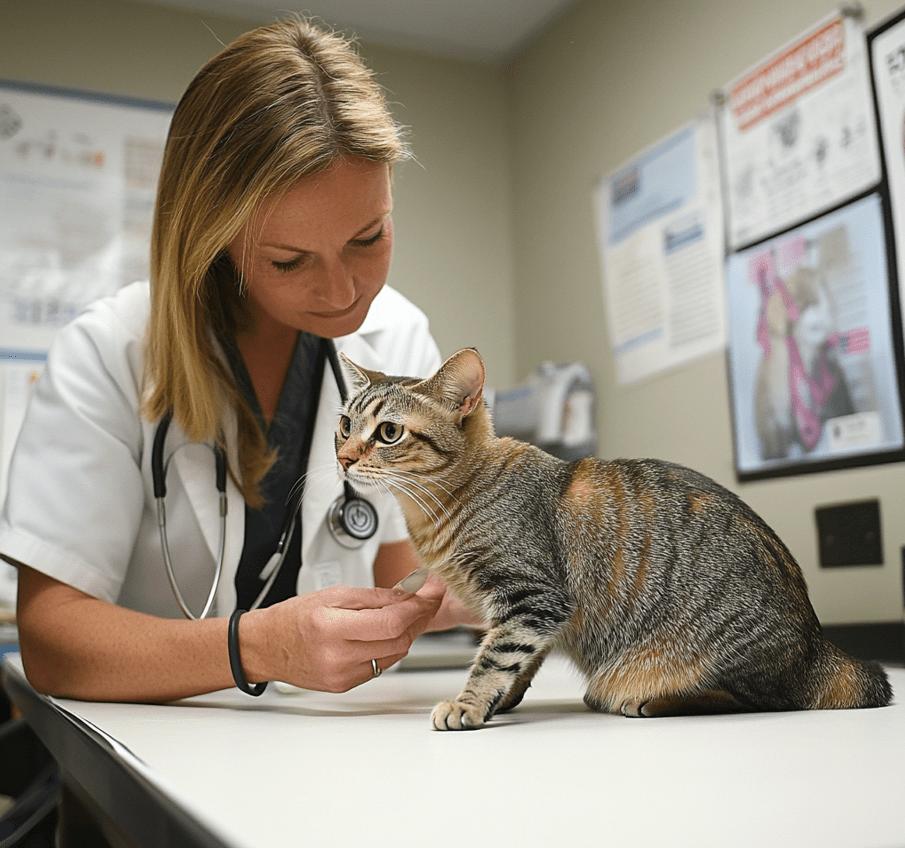
2. Blood Tests
A blood test to measure thyroid hormone levels (T4) is the most common diagnostic tool. Elevated T4 levels usually confirm hyperthyroidism, though in some cases, additional tests like a T3 suppression test may be needed for a definitive diagnosis.
3. Additional Tests
Since hyperthyroidism can affect other organs, your vet may recommend:
Blood Pressure Measurement: To check for hypertension.
Kidney Function Tests: Hyperthyroidism can mask underlying kidney disease, which may become apparent once treatment begins.
Echocardiogram: To evaluate heart function if a murmur or rapid heart rate is detected.
Treatment Options for Hyperthyroidism in Older Domestic Shorthairs
Once diagnosed, hyperthyroidism is a manageable condition with several treatment options. The best approach depends on your cat’s overall health, age, and your preferences.
1. Medication (Methimazole)
Methimazole is the most common treatment for feline hyperthyroidism. This oral medication inhibits the production of thyroid hormones, helping to manage symptoms. It’s typically administered once or twice daily and requires regular monitoring to ensure the correct dosage.
Pros: Non-invasive, widely available, and reversible.
Cons: Lifelong treatment is often required, and side effects like vomiting or lethargy may occur.
2. Radioactive Iodine Therapy
Radioactive iodine (I-131) therapy is considered the gold standard for treating hyperthyroidism in cats. This treatment involves a single injection of radioactive iodine, which targets and destroys the abnormal thyroid tissue while sparing healthy tissue.
Pros: Often a permanent cure, with a success rate of over 95%.
Cons: Expensive, requires a hospital stay (due to radiation safety protocols), and may not be available in all areas.
3. Surgical Removal of the Thyroid Gland
Thyroidectomy, or surgical removal of the thyroid gland, is another option. This is typically recommended for cats that cannot undergo radioactive iodine therapy or tolerate medication.
Pros: Can be curative.
Cons: Involves anesthesia, which can be risky for older cats, and there’s a risk of damaging nearby structures like the parathyroid glands.
4. Dietary Management
A prescription diet low in iodine (such as Hill’s Prescription Diet y/d) can help manage hyperthyroidism by reducing the production of thyroid hormones. This option is less common but may be suitable for cats that cannot tolerate other treatments.
Pros: Non-invasive and easy to implement.
Cons: Requires strict adherence to the diet (no other food or treats), and not all cats respond well.
Managing Hyperthyroidism Symptoms in Older Domestic Shorthairs at Home
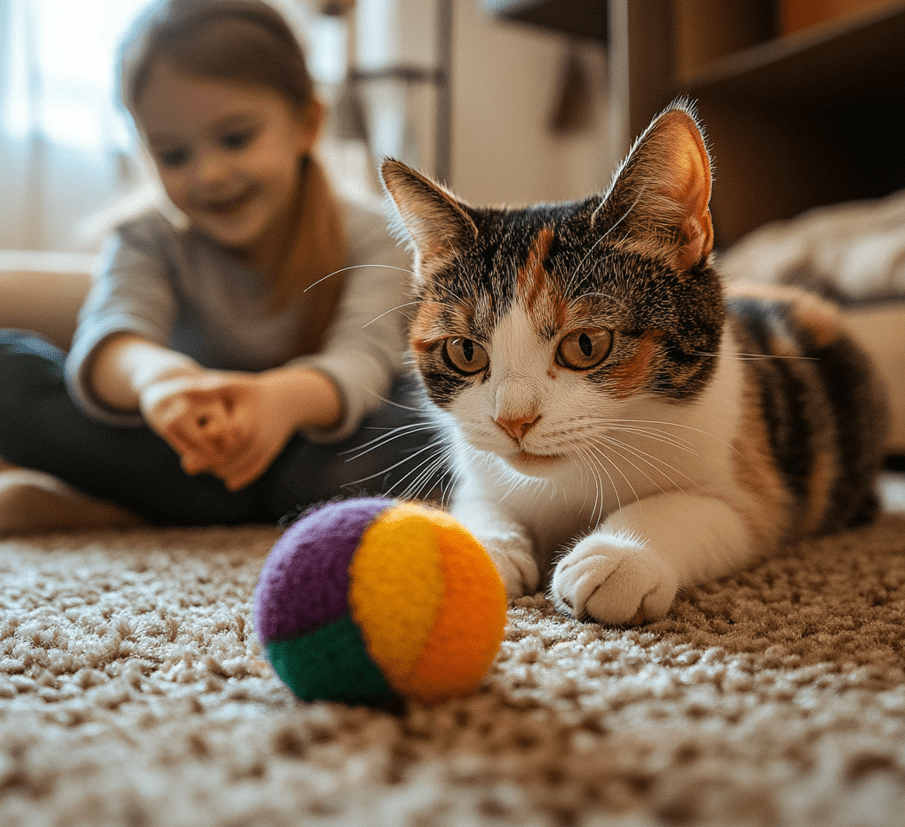
In addition to veterinary treatment, there are steps you can take at home to support your cat’s health and comfort:
1. Monitor Weight and Appetite
Keep track of your cat’s weight and eating habits. If they’re on medication, sudden weight gain or loss could indicate a need for dosage adjustment.
2. Provide Fresh Water
Since increased thirst is a common symptom, ensure your cat has constant access to fresh, clean water. Consider using a pet water fountain to encourage drinking.
3. Create a Calm Environment
Hyperthyroidism can make cats more anxious or restless. Provide a quiet, stress-free environment with plenty of cozy spots for resting.
4. Regular Grooming
If your cat’s coat condition has deteriorated, gently groom them to prevent matting and keep their skin healthy.
5. Schedule Regular Vet Checkups
Regular veterinary visits are essential to monitor your cat’s thyroid levels, kidney function, and overall health, especially if they’re on long-term medication.
Complications of Untreated Hyperthyroidism
If left untreated, hyperthyroidism can lead to serious health complications in older Domestic Shorthairs, including:
Heart Disease: The strain on the heart can lead to hypertrophic cardiomyopathy, a condition where the heart muscle thickens, impairing its ability to pump blood effectively.
High Blood Pressure: Hypertension can cause damage to the eyes, kidneys, and brain, potentially leading to blindness or neurological issues.
Kidney Damage: Hyperthyroidism can mask underlying kidney disease, which may worsen once thyroid levels are brought under control.
Preventing Hyperthyroidism in Domestic Shorthairs
While hyperthyroidism cannot always be prevented, you can reduce your cat’s risk by:
-
Feeding a balanced diet with appropriate iodine levels.
-
Minimizing exposure to environmental toxins, such as flame retardants in furniture or bedding.
-
Scheduling regular veterinary checkups, especially as your cat enters their senior years (10+ years).
When to See a Veterinarian
If you notice any of the symptoms mentioned above—weight loss, increased appetite, hyperactivity, or changes in behavior—schedule a vet visit as soon as possible. Early diagnosis and treatment can prevent complications and improve your cat’s quality of life.
Conclusion
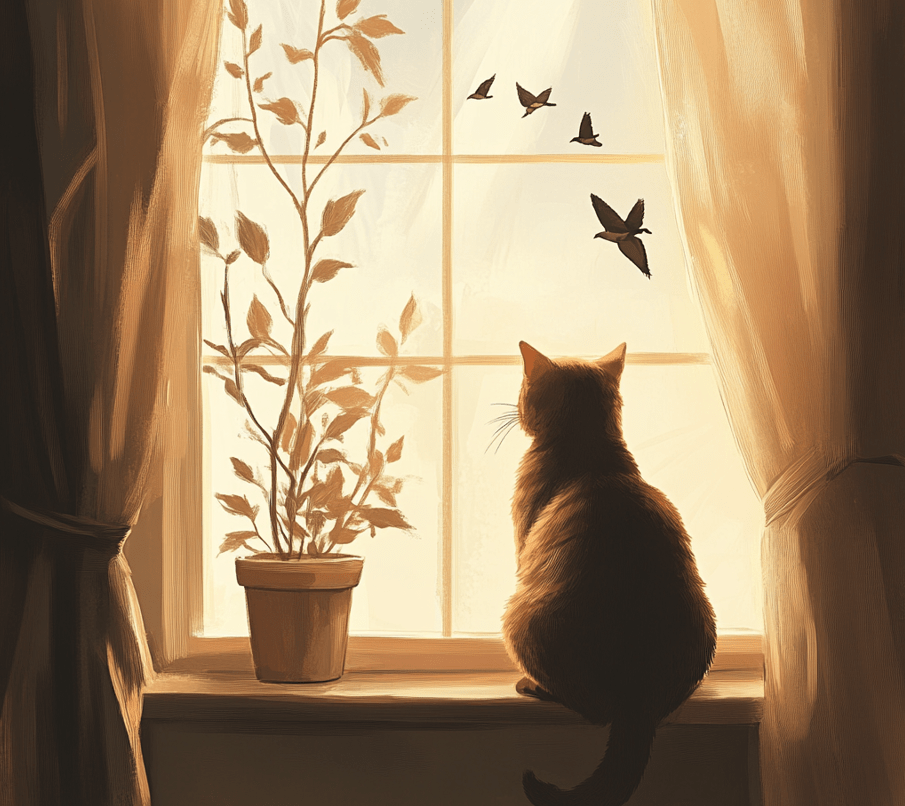
Hyperthyroidism is a manageable condition in older Domestic Shorthairs, but early detection is key. By learning to spot hyperthyroidism symptoms in older Domestic Shorthairs, such as weight loss, increased thirst, and hyperactivity, you can take proactive steps to ensure your cat receives the care they need. Whether through medication, radioactive iodine therapy, surgery, or dietary changes, there are effective ways to manage this condition and improve your cat’s quality of life. Regular vet checkups, a supportive home environment, and close monitoring can help your feline companion thrive, even in their senior years.

